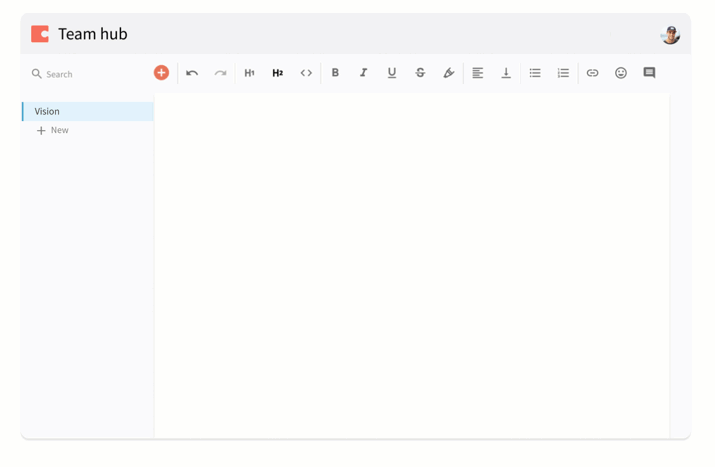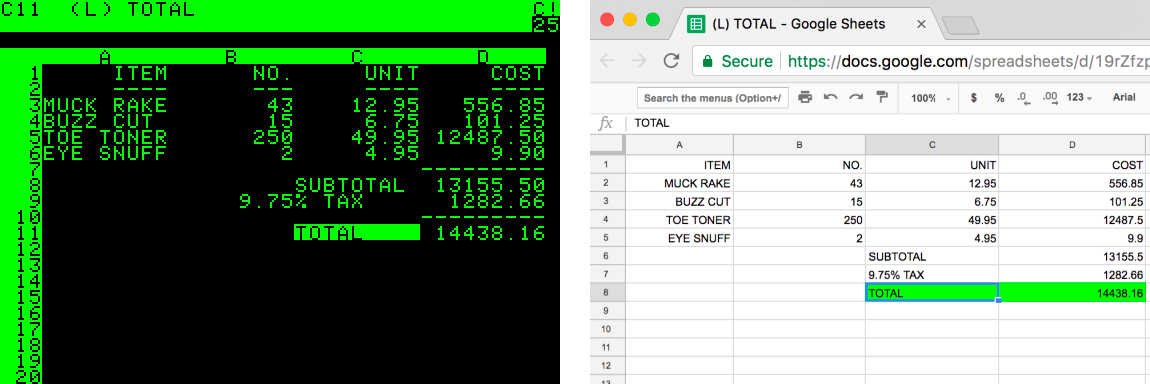Share
Explore

Originally published 10/19/2017
TL;DR
We’ve built a new type of document called
and we are inviting others to see what it can do for them and their teams. Here’s a quick peek:

First, an observation.
Our journey started with a simple observation: In a world full of applications, why do documents and spreadsheets seem to run everything?
I’ll give you an example. In my last role at YouTube, we had hundreds of pre-built tools at our disposal. But we preferred to run our thousand-person organization off a handful of documents and spreadsheets.Some folks found that crazy, but I personally found it awesome.
The documents and spreadsheets we built were as unique and creative as our team. We used them to manage simultaneous feature releases across hundreds of devices, and even invent our own performance review system. They weren’t easy to build — a misplaced dollar sign in a spreadsheet would set us back a week. But they were better than pre-packaged tools because they were built for us and our own way of doing things.
I noticed the same thing happening at other companies. I’d ask friends what tools they used at work. They’d rattle off a list of packaged applications (Salesforce, JIRA, Workday, and so on). But when they looked closely, they’d admit documents and spreadsheets were running the show.
But here’s the thing:
Documents haven’t changed in 40 years.
In the 70s, we started digitizing documents. We turned the leaf of paper into a word processor (WordStar), the accountant’s ledger into a spreadsheet (VisiCalc), and the professor’s slides into a presentation (Harvard Graphics).
Over the next 40 years, the digital landscape completely transformed. Operating systems shifted fundamentally. Databases moved past relational. Television went from broadcast to cable to online video. Search engines and social networks took over.
Surprisingly, documents, on a fundamental and structural level, didn’t change.

VisiCalc, invented in 1978, next to a Google Sheet. The interface changed and we went from desktop to the cloud, but the core primitives are the same. (We still reference A1 and B2 in a spreadsheet — I call that Battleship.) VisiCalc image:
But the way we use documents has completely shifted. We aren’t trying to digitize physical analogs any more; we’re using documents as tools to run our teams.
This raises a few questions.
Why are we still clinging to metaphors long-forgotten: the accountant’s grid, the typist’s paper, the professor’s slides? Why do these tools insist on creating boundaries where we don’t need them — forcing us to choose between a document or a spreadsheet? How do we empower the growing class of people who stretch docs and turn them into ingenious tools?
Finally, what would we build if we started from scratch?
Around the same time, I got together with Alex DeNeui, one of the most talented engineers I know. The more we talked about it, this last question stuck with us: What would we build if we started from scratch? Slowly a vision for a new doc started to form. And once it was in our heads, we couldn’t not build it.
Introducing Coda.
Coda is a new type of doc that blends the flexibility of documents, the power of spreadsheets, and the utility of applications into a single new canvas. That’s Coda. It lets you make a doc as powerful as an app.
The starting point for Coda will feel very familiar. Like most documents, it starts with a blank page and a blinking cursor. But the core engine slowly reveals itself to be quite different and powerful. Coda docs are built to erase boundaries, combining the flexibility of writing words on a page with rich, structured data formed on tables. We built it so everyone can work together, in their own way, off the same data. We engineered it like a programming platform and built a new formula language. The goal was to enable these documents to grow with people’s creativity. One of our early users referred to it as “Minecraft for docs.” Perfect.
A fresh take on something so fundamental to our workplace isn’t going to happen overnight. We’ve been hard at work for three years, thinking, questioning, andーabove allー testing. Starting with ourselves. We run all of Coda on Coda — everything from our bug and customer tracking systems to hackathons, brainstorming, and note taking. If something needs doing, we open a doc.
We also roped in former colleagues to use Coda. Word got out to some teams at companies you probably know, and they asked to join our alpha test. As usage grew, Coda docs started taking on lives of their own. Our recruiter Raechel made an elaborate wedding planning doc. A hundred-person team uses Coda for one of its biggest projects. And my eldest daughter just onboarded her Lego robot league team in hopes of winning another championship this season.
What will you Coda?
We can’t wait to find out. We hope you’ll put Coda to the test and start building docs we haven’t even imagined. Sign up for our beta today at
Want to print your doc?
This is not the way.
This is not the way.

Try clicking the ⋯ next to your doc name or using a keyboard shortcut (
CtrlP
) instead.